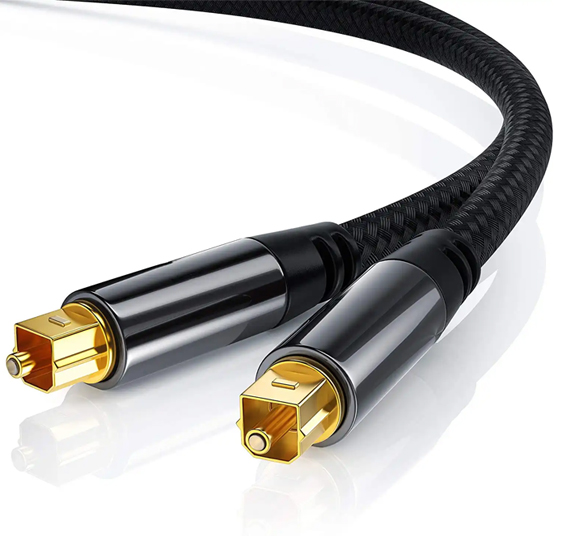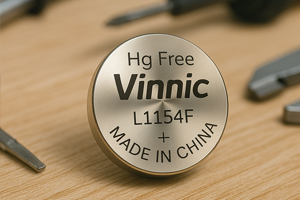What is an Optical Audio Cable? Everything to Know Before Buying
Author:admin Date: 2025-05-16 10:16 Views:880
HDMI ARC vs. Digital Optical (TosLink) | How to get the best sound
- Introduction
- How Does an Optical Audio Cable Work?
- Audio Formats Supported by Optical Audio Cables
- Benefits of Optical Audio Cables
- How to Pick the Right Optical Audio Cable
- How to Set Up an Optical Audio Cable
- Optical Audio Cable Vs Other Common Audio Cables
- Maintenance and Care Tips for Optical Cables
- Conclusion
Introduction
Connecting speakers to a radio or any other source of sound is mostly done using RCA or HDMI cables. With wireless technology, you could use Bluetooth. However, in addition to these technologies, you get the optical audio cable. It might seem old technology, but it is still relevant today, with some manufacturers still making devices that use it.
So, what is an optical audio cable?
This type of audio cable is designed to transmit digital audio signals using light rather than electrical signals. It uses fiber optic technology for audio transmission and is common in devices such as AV receivers, soundbars, and Blu-ray players.
When you encounter the name Toslink, just know it is an optical audio cable, as Toshiba gave it that name. The company had a significant involvement in developing the technology and interface powering the cable.

How Does an Optical Audio Cable Work?
We have already seen how optical cable for audio transmits digital audio signals as light rather than electrical signals. However, how does this work exactly?
First, the audio source, such as a TV or Blu-ray player, converts the audio signal into a digital format. Next, the optical connector transmitter’s light-emitting diode (LED) converts this digital signal into a series of light pulses.
These light pulses are then transmitted through the optical digital audio cable. At the receiving end, a light-emitting module converts the light pulses into an electrical signal, which is now processed as audio.
Audio Formats Supported by Optical Audio Cables
People often consider digital optical audio cables because they can support a wide range of audio formats. The more formats a technology can support, the better it is for the end user.
The optical audio cable supports formats such as Dolby Digital, DTS, and Pulse Code Modulation. For Dolby Digital, this is the format you mostly get on DVDs and Blu-rays. The DTS is another compressed format commonly used in movies and Blu-rays.
The PCM or pulse code modulation is another audio format commonly used in two-channel stereo sounds.
However, optical audio cables do not support higher resolution formats such as Dolby TrueHD, DTS-HD Master Audio, Dolby Atmos, and DTS:X.
As much as there are some audio formats the cable does not support, you may get audio sources with a technology that can convert the signals into a format the optical audio cable can handle.
Benefits of Optical Audio Cables
People consider fiber optic audio cables because they offer multiple benefits. Here is what you get with optical audio cables.
- Superior sound quality as the audio is transmitted as light pulses to ensure you get clear and uncompressed audio streams.
- Light pulses transmitting the signals are immune to electromagnetic and radio frequency interferences. This means the audio quality is generally preserved for the better.
- Optical cables are smaller and more flexible than traditional RCA cables, making them easy to manage and install.
- You can run longer cable runs for digital optical audio cables,and they will not affect the quality of the audio signal. While other types of cables might struggle, that is not the case for optical audio cables.
- The optical audio cable’s overall compatibility is quite impressive. It can work with soundbars, game consoles, DVD players, TVs, and other electronics.
- If you have experienced ground loop humming, it is time to switch to an optical audio cable. This is because it does not use electrical conductivity, which can lead to such issues.
- Supports high-quality audio formats. For example, the PCM 2.0 format offers uncompressed performance which is good for those looking to experience music with better clarity as well.
How to Pick the Right Optical Audio Cable
You have seen how good the optical audio cables are in performance. The next thing is to consider getting them for your application. However, how do you pick the right one? Here are some ideas to get started.
The Length
The overall length is vital to choosing not only the optical audio cable but also the other types. We do not recommend buying a cable longer than 10 meters as the overall signal quality can be affected. This is why most cables will be around 5 meters and do not need a signal booster.
Sometimes you can come across such cables with melted quartz to support signal quality even over long distances.
The Width
You can still consider the width as it affects overall durability, but not signal performance. There is not much difference in the 5mm and 8mm optical audio cables. However, having a thicker outer cover means it is better reinforced and lasts longer than the thinner cables.
Brands
Brands mostly do a good job of producing quality optical audio cables. However, reading customer reviews can help identify the best brands in the business.
Cost can also be a factor depending on the brand. Expect some models with additional features, such as gold-plated connectors, to cost more. So, it also depends on the application. The gold plating is unnecessary for everyday use but is a nice touch.
Bandwidth
The bandwidth is crucial for understanding how well the cable can perform. It is recommended to have a cable with a bandwidth of 9 MHz to 11 MHz. A higher bandwidth is better, especially for professional applications.
How to Set Up an Optical Audio Cable
Let us say you know how to connect optical audio cable to TV. Below, we take you through the steps on how to do this without a problem.
- Power off the devices and remove the optical cable caps on both ends
- First, connect the cable to the TV. Make sure you plug into the port written “Digital Audio Out” or “Optical Out” on the TV.
- Next is to connect the cable to the receiver or soundbar. Plug the other end of the optical cable into the “Digital Audio In” or “Optical In” on the soundbar, amplifier, or home theater.
- Turn on the devices and configure the TV to work with the optical cable. To do this, go to the TV’s audio or sound settings. Choose the output audio method and select the “Optical” or “Digital Audio Out” option.
- On your soundbar or receiver, you also have to choose the audio source as “Optical” and test the connection to see if the sound from the TV comes through.
Optical Audio Cable Vs Other Common Audio Cables
RCA, HDMI, and optical audio cables are the main types of audio transmission cables. However, how do they compare?
The optical cables for audio transmit digital audio signals with the use of light pulses through a fiber optic cable. The reason such cables are popular is because they offer superior noise immunity. Expect high signal integrity as the working mechanism also leaves you with high audio quality even for longer distance transmission.
As good as optical audio cables are, they are also limited. They can only transmit digital audio but not analog or video signals, and they do not support all high-resolution audio formats.
RCA audio cables are useful for transmitting analog audio signals using electrical pulses, mostly through copper wires. Their advantage is that they are widely available. You can get them from any electrical shop.
These cables are suitable for many applications but tend to be susceptible to interference. They can be prone to noise and signal degradation, mostly over long distances.
HDMI cables are often considered an upgrade as they can transmit digital audio and video signals with a single cable. This makes them more versatile as you do not need multiple cables to handle audio and video signals.
HDMI cables also support high-resolution audio formats, which optical audio cables may not. Even though these cables can be more expensive, they still deliver more performance, which might be what you are looking for.
Maintenance and Care Tips for Optical Cables
Caring for the best optical audio cable does not have to be hard. In most cases, you just need to keep it clean, and you should be good. Start by regularly cleaning the connectors with lint-free wipes. You can also use dust caps to prevent contamination and moisture from getting in while not using the optical audio cable.
When handling and storing cables, avoid bending or putting kinks in them. This can damage them. You should always handle the cables with care and avoid excessive pulling or pressure to keep them in good working condition.
Regular inspections and testing of the cables can help identify potential problems early. Check for loose connectors, bends, or breaks. If a cable is not working, test it with another cable to see if it is the cable with the issue or the port.
If you ever need to repair or splice your optical audio cable, make sure it is done by a professional using the right tools. This will ensure the cable can still work.
Conclusion
Optical audio cables are still important today for many applications. You are likely to find them in many devices that need them for great signal performance. You will always appreciate the sound quality you get with such a cable compared to other options. It might have some limitations, but it will remain a good choice for some people. You may consider alternatives such as HDMI if you need a cable that supports high-resolution audio formats.
Please send RFQ , we will respond immediately.
Frequently Asked Questions
Do optical audio cables support all audio formats?
No. Optical audio cables do not support all audio formats especially the high resolution formats. This includes the Dolby Digital Plus, Dolby TrueHD, or Dolby Atmos. Consider using the HDMI cables to support such formats.
Can optical audio cables carry video signals?
The optical audio cables are designed solely for audio signals. They cannot transmit video signals.
Are the optical audio cables built the same?
These cables might have similar functionality, but depending on the brand, they might have differences in build quality. This might affect the overall durability, performance, and lifespan of the cable.
What is the optimal length for an optical audio cable?
The recommended maximum length for an optical audio cable is 10 meters or 32.8 feet. Signal quality tends to degrade past this length.


